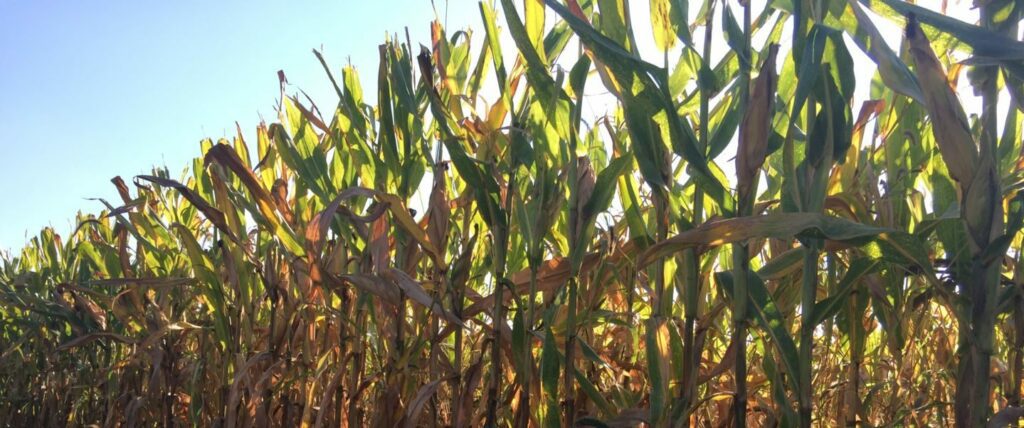I’m sitting at our big table in the farm office this morning looking out at the rain. Two months late, but here it is. We got so dry this fall it was hard to work down the corn stalks after seed corn harvest. Overall our crops are OK, and some are looking really good. We’re now gearing up for a fresh start next spring. We need to put on our fall fertilizers (mostly Midwestern BioAg calcium sources and manures), do fall tillage and plant cover crops and then we’ll be ready.
Farms, as with life, are always changing. On my family’s farm we made two major changes this year. The first change was adding RTK, along with bigger equipment and all auto steer. We also have guidance systems with cameras. I know we weren’t the first ones in the game, and of course we had our excuses (like cost and poor GPS reception) but it should be a great improvement on weed control as we get things more precise.
The second major change is that we are taking the grain away from the dairy cows. Starting in spring we will be going to an all forage diet. At present we are about a 21,000 lb producing organic herd. These are mostly Holsteins and I’m sure there will be a learning curve. I’m also sure we will lose some milk, though hopefully no more than 10 to 15%. I have been on all forage dairies that get only 8,000 lbs of milk from their cows. At that level we can’t pay our bills! We have been feeding some corn silage, a small amount (10 lbs) of corn, 1 to 2 lbs of roasted beans and super quality forages. We will add more varieties of forages, like plantain, sudan grasses, brassicas and small grain silage cut before it heads out. Protein won’t be our problem, energy will! We just added organic liquid sugar into the cows’ diet and will continue that. Whatever we add to the diet—energy, protein, minerals—will be things that are missing in the forages but we will make sure we get all the nutrition in our forages we can.
As I mentioned in my summer letter, our farm went through other changes this year as we added more acres and milk fewer cows. The corn stalks now stay in the field. On fields where we grow oats underseeded with alfalfa, clover and grasses, the straw following oats harvest stays, then the underseeded mix grows as a cover crop. Late summer it gets clipped to keep it from getting too big, and the following spring when the legumes get a foot tall we turn the whole mix into the soils. This used to be bedding and livestock feed – now it’s soil livestock feed!
As I write this I’m looking out my window at a new seeding alfalfa field that had 5 cuttings this year. The alfalfa is now about a foot tall and next spring when the new growth gets a foot tall it will be turned into the soil to become soil livestock feed that will turn into a corn crop. Yes, we are growing one year of alfalfa grass forage and then one year of corn. This is done near the dairy barn where we are trying to export minerals off the land because the soil level is high due to a lot of manure use plus balanced fertilizers for 20 years. We don’t skimp. We also don’t grid sample on our farm. I think grid sampling is a good idea if the soil is lower testing on fertility. Ours is not.
When we fertilize we start with calcium and phosphorus, apply manures, and then add potassium and trace minerals to every field. After a while, the soils really change. I was visiting with a farmer yesterday who is trying cover crops, is interested in better fertility, but is still using every chance he can to apply plant protective compounds like insecticides, fungicides, etc. because he said research says it pays. What pays is having a healthy crop with no limits on production. One thing good about organic choices being limited is that we can’t bail out the crop when trouble happens so we have to farm for soil health and plant health in order to prevent problems from happening in the first place.
Midwestern BioAg also has a lot of changes this year with the introduction of our new TerraNu™ product line. Our TerraNu Nutrient Technology™—using the digestate from dairy cow manure coming out of an anaerobic digester and turning that into a granulated fertilizer that can be precision-applied—is a big part of the future at Midwestern BioAg. As results come in from farms, we like what we see. It’s exciting and a bit overwhelming to be involved in the future of obtaining healthy, high yielding soils and crops.
Have a great harvest.
Gary F Zimmer

